Influence of the Nasometric Instrument Structure on Nasalance Score
Abstract
1. Introduction
2. Conventional Nasometric Instruments
2.1. Characteristics and Structure of the Nasometric Instrument
2.2. Acoustic Feedback Effect of Separation-Type Nasometric Instrument
2.3. Lumped-Element Model for Closed Mask-Type Nasometric Instrument
3. Nasalance Characteristics according to the Structure of the Nasometric Instrument
3.1. Clinical Experiments for the Nasalance Evaluation
3.2. Experimental Results
4. Discussion and Conclusions
Author Contributions
Funding
Conflicts of Interest
References
- Joseph, C.S.; Edie, R.H. Voice Theraphy: Clinical Case Studies, 4th ed.; Plural Publishing: San Diego, CA, USA, 2019; pp. 13–31. [Google Scholar]
- Borden, D.R.; Borden, S.C. The Voice and Voice Theraphy, 1st ed.; Allyn & Bacon: Boston, MA, USA, 2000; pp. 165–172. [Google Scholar]
- Kang, J.E. The Relationship between Speaker Factors and Speech Intelligibility of Children with Cleft Palate. Commun. Sci. Disord. 2009, 14, 338–348. [Google Scholar]
- Lee, J.N.; Lee, G.H.; Na, S.D.; Seong, G.W.; Cho, J.H.; Kim, M.N. Noise Cancellation Algorithm of Bone Conduction Speech Signal using Feature of Noise in Separated Band. J. Korea Multimed. Soc. 2016, 19, 128–137. [Google Scholar] [CrossRef]
- Shin, H.G. Assessment and Treatment of the Cleft Palate Speech Disorder by Use of the Nasometer. Korean Cleft Lip Assoc. 2008, 11, 1–11. [Google Scholar]
- Lim, S.E. Nasalance Scores of 5 to 7-Year-Old Korean Children. J. Korean Acad. Speech Lang. Pathol. Audiol. 2005, 10, 71–88. [Google Scholar]
- Kang, S.G. Study on Nasalance of in Five-age Children. J. Korean Soc. Spec. Educ. 2000, 1, 12–22. [Google Scholar]
- Kang, S.J.; Choi, H.J. Effect of Percentage of Correct Consonants and Nasalance Score on the Speech Intelligibility and Acceptability in Adults with Dysarthria. J. Rehabil. Int. Korea 2016, 20, 67–82. [Google Scholar]
- Ziade, G.; Kasti, M.; Sarieddine, D. Clinical Application of Nasometry in Patients with Nasal Obstruction. Ear Nose Throat J. 2017, 96, 1–4. [Google Scholar] [CrossRef] [PubMed]
- Shin, H.S. Treatment Device for Voice Disorders. Patents Korea (No. 10-1114920). Available online: https://patents.google.com/patent/KR101114920B1/ko (accessed on 10 October 2018).
- Watterson, T.; Lewis, K.; Brancamp, T. Comparison of Nasalance Scores Obtained with the Nasometer 6200 and the Nasometer II 6400. Cleft Palate-Craniofac. J. 2005, 42, 574–579. [Google Scholar] [CrossRef] [PubMed]
- Woo, S.T.; Han, J.H.; Lee, J.H.; Seong, K.W.; Cho, J.H.; Choi, M.H. Realization of a High Sensitivity Microphone for a Hearing Aid using a Graphene−PMMA Laminated Diaphragm. ACS Appl. Mater. Interfaces 2017, 9, 1237–1246. [Google Scholar] [CrossRef] [PubMed]
- Eargle, J. The Microphone Book; Taylor and Francis Group: Abingdon, UK, 2005; pp. 102–154. [Google Scholar]
- Omori, T.; Usui, T.; Watabe, K.; Nguyen, M.D.; Matsumoto, K.; Shimoyama, I. Elastic Wave Mearsurement using a MEMS AE Sensor. Appl. Sci. 2017, 7, 737. [Google Scholar] [CrossRef]
- Gildersleeve-Neumann, C.E.; Dalston, R.M. Nasalance Scores in Noncleft Individuals: Why Not Zero? Cleft Palate-Craniofac. J. 2001, 38, 106–111. [Google Scholar] [CrossRef] [PubMed]
- Rokhlin, V. Diagonal Forms of Translation Operators for the Helmholtz Equation in Three Dimensions. Appl. Comput. Harmon. Anal. 1993, 1, 82–93. [Google Scholar] [CrossRef]
- Bai, M.R.; Chen, R.L.; Wang, C.J. Electroacoustic Analysis of an Electret Loudspeaker using Combined Finite-element and Lumped-parameter Models. J. Acoust. Soc. Am. 2009, 125, 3632–3640. [Google Scholar] [CrossRef] [PubMed]
- Lohfink, A.; Eccardt, P.C. Linear and Nonlinear Equivalent Circuit Modeling of CMUTs. IEEE Trans. Ultrason. Ferroelectr. Freq. Control 2005, 52, 2163–2172. [Google Scholar] [CrossRef] [PubMed]
- Mohamad, N.; Iovenitti, P.; Vinay, T. Modelling and Optimisation of a Spring-supported Diaphragm Capacitive MEMS Microphone. Sci. Res. 2010, 2, 762–770. [Google Scholar] [CrossRef]
- Tilmans, H.A.C. Equivalent Circuit Representation of Electromechanical Transducer Ⅱ. Distributed-Parameter Systems. J. Micromech. Microeng. 1996, 7, 157–176. [Google Scholar] [CrossRef]
- Raphael, L.J. Speech Science Primer; Lippincott Williams & Wilkins: Philadelphia, PA, USA, 2013; pp. 58–77. [Google Scholar]
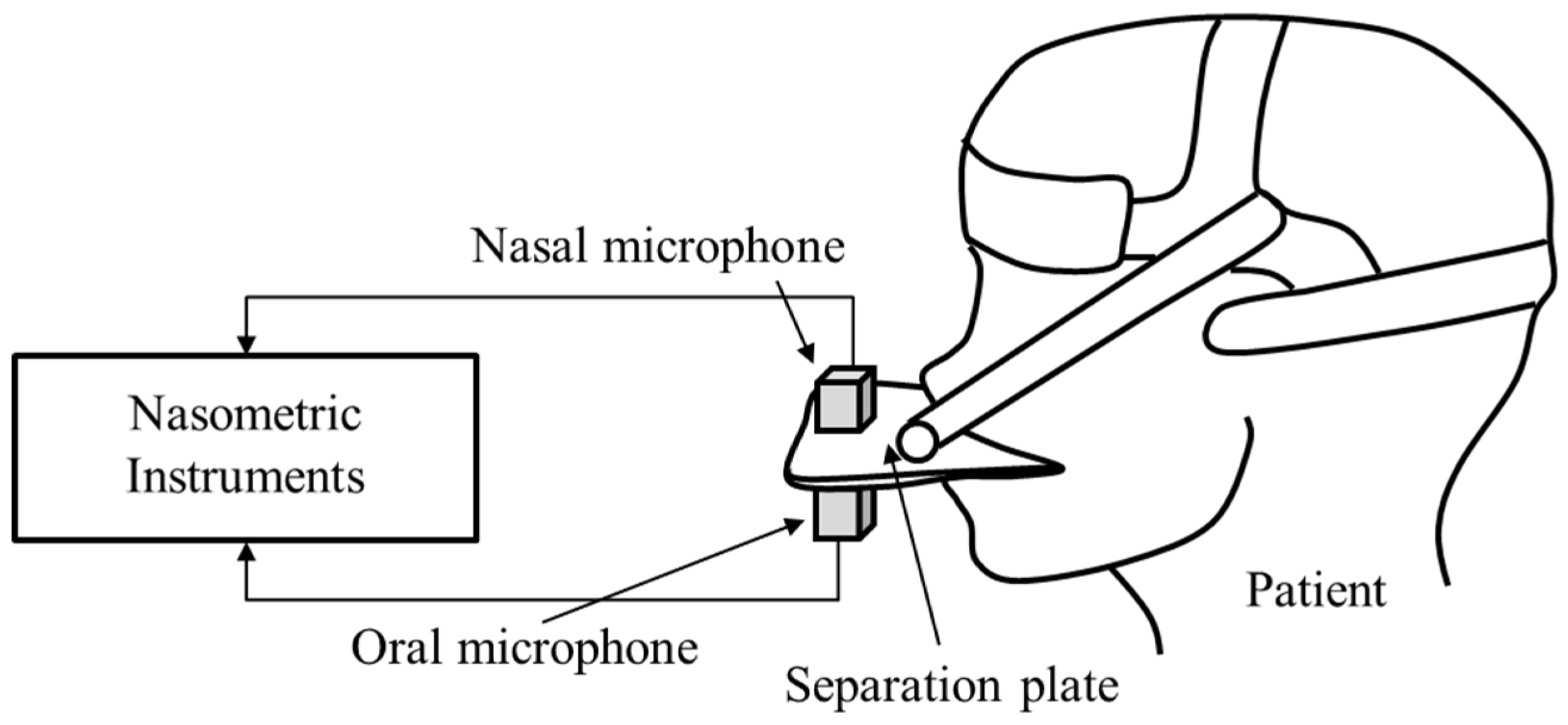
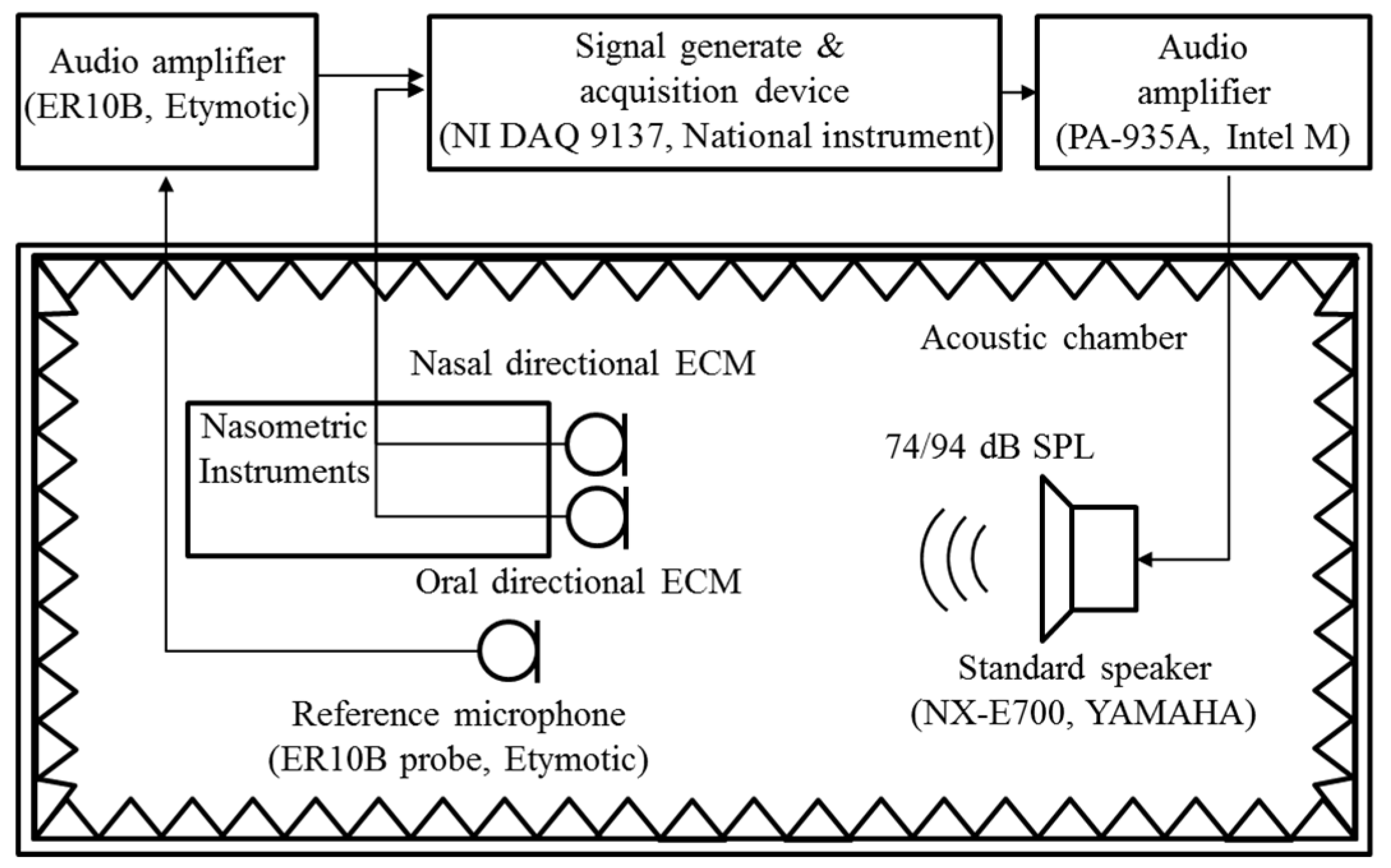
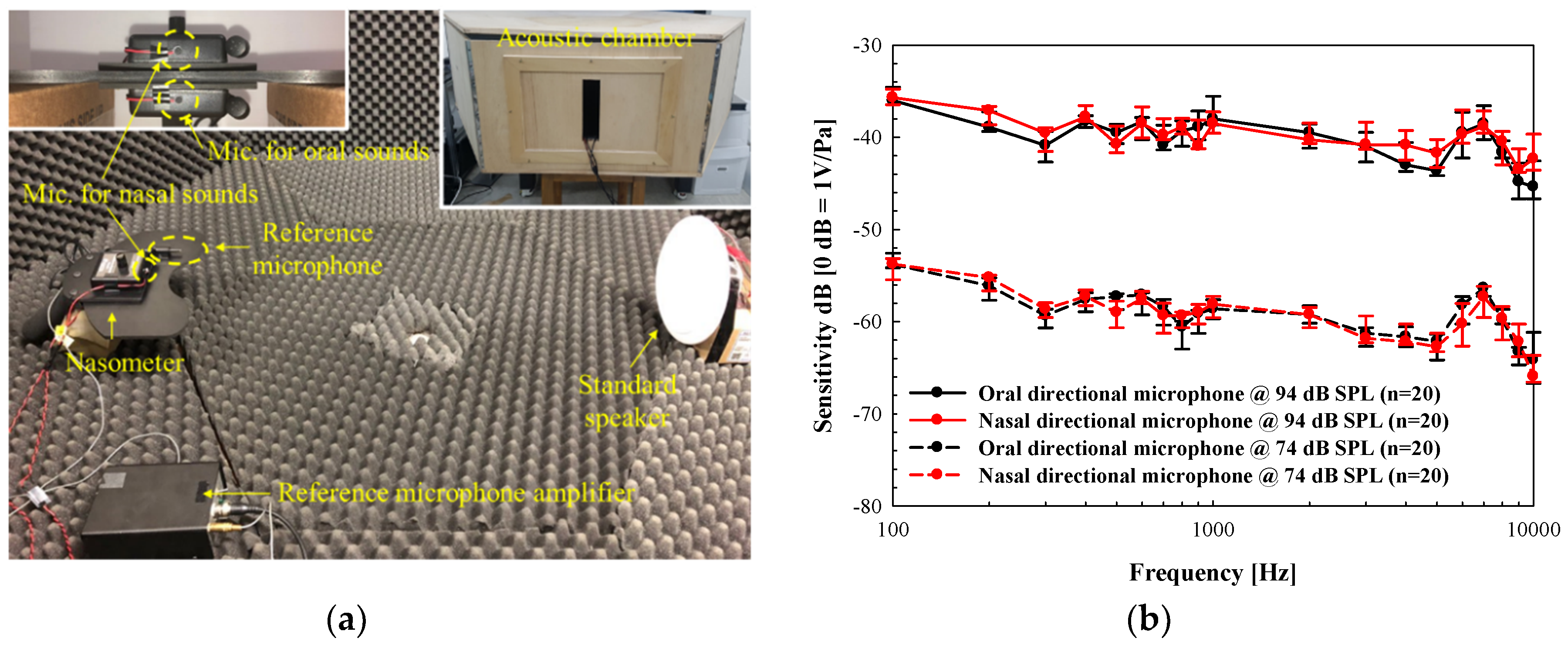
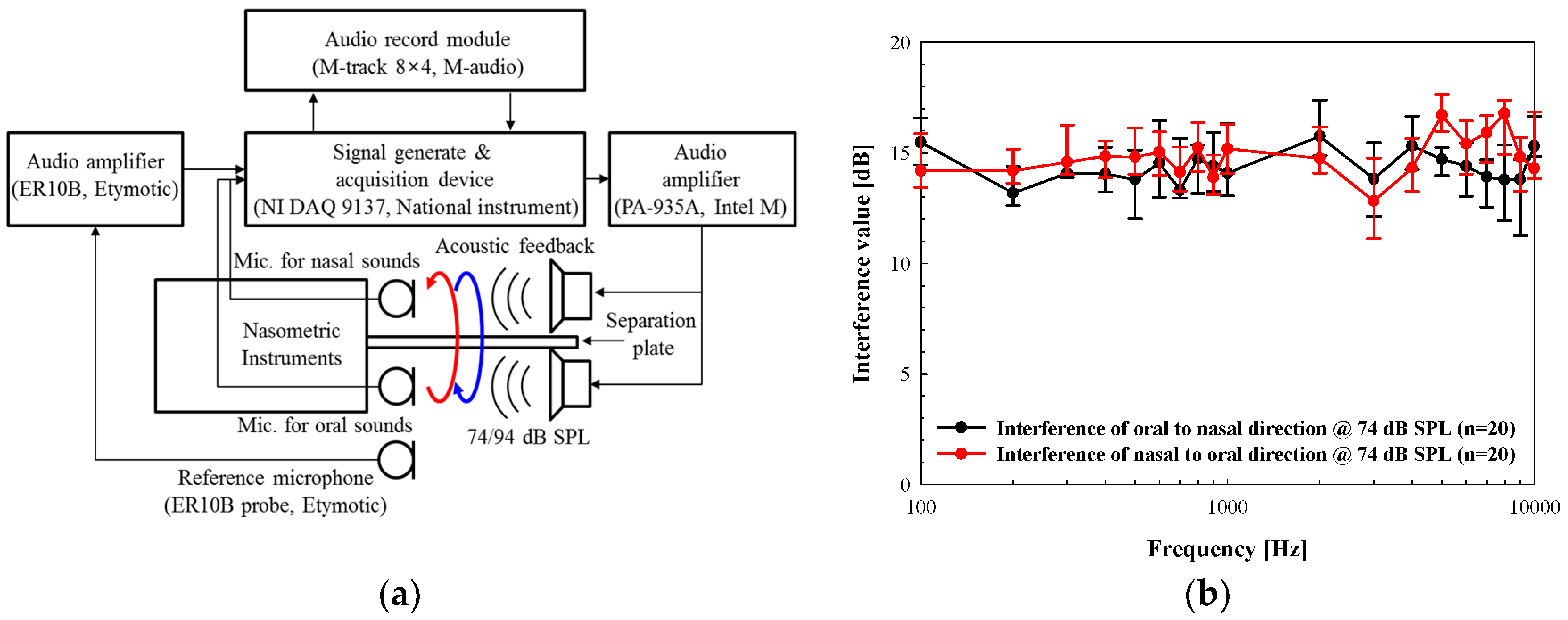

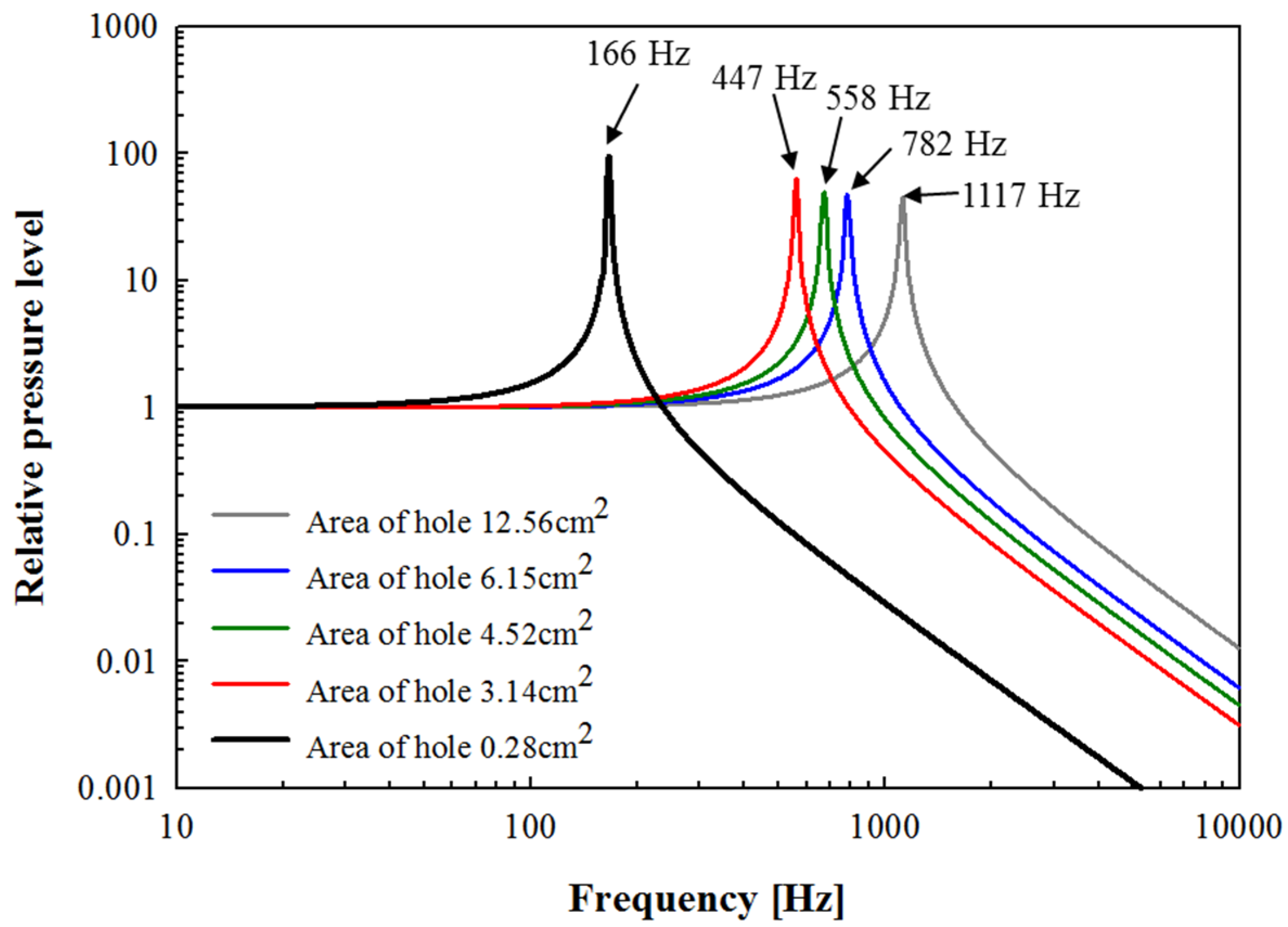
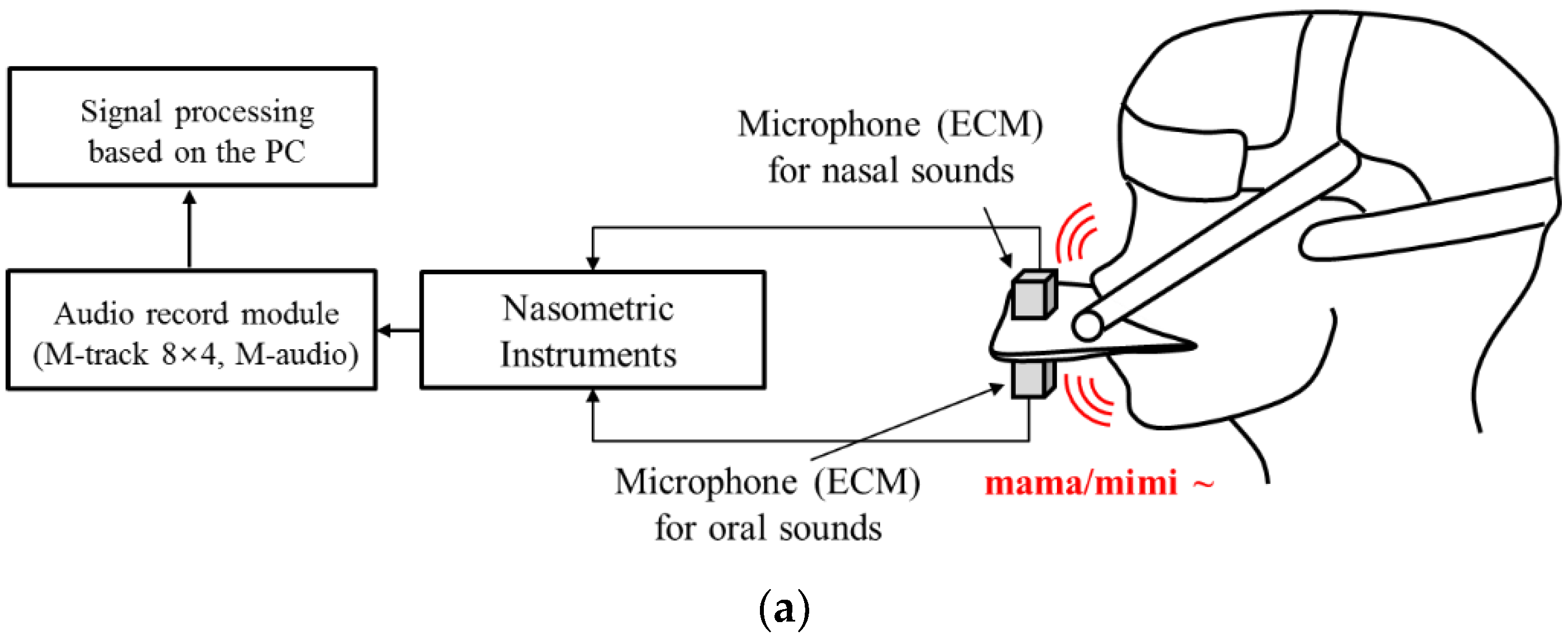
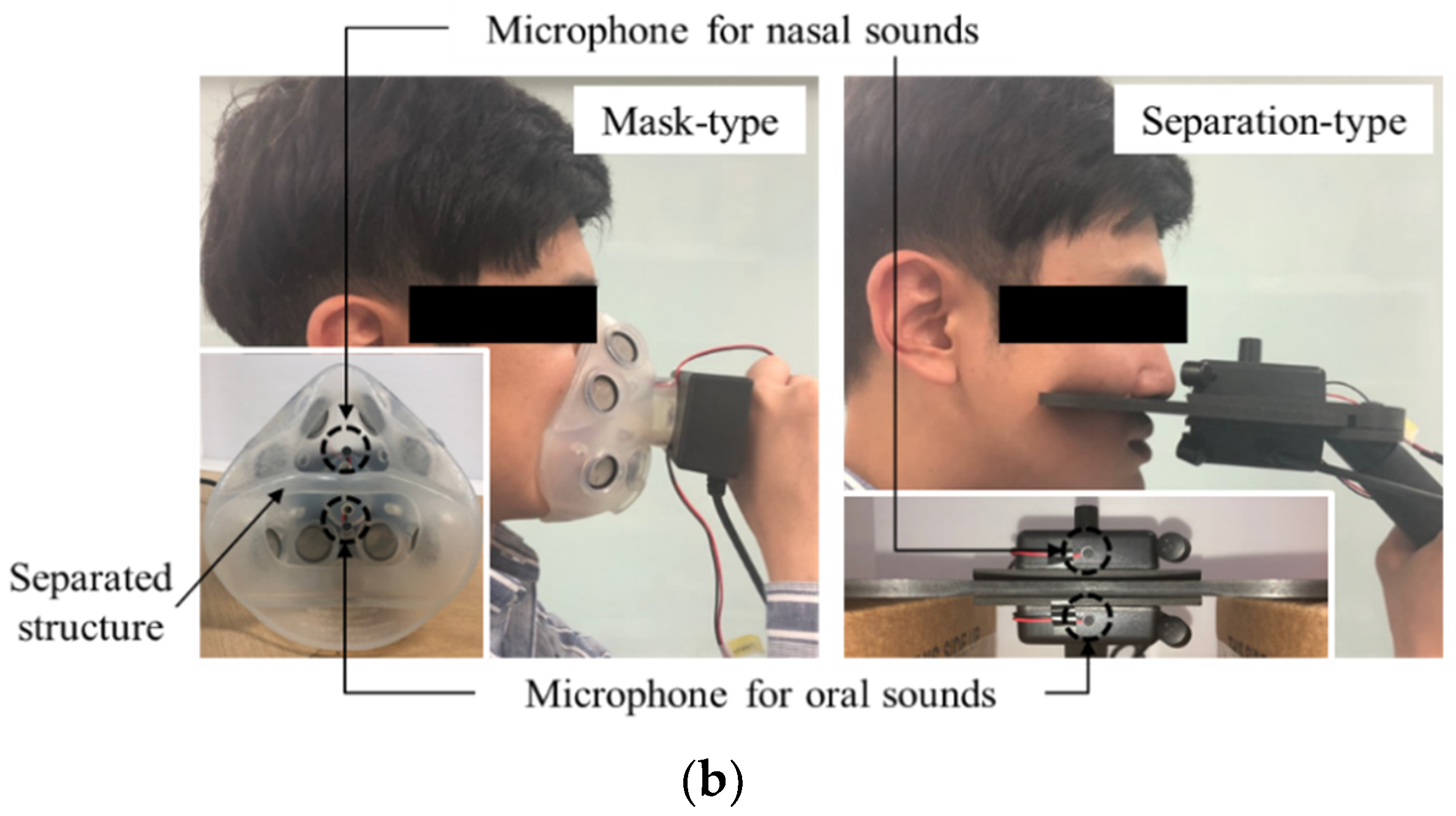
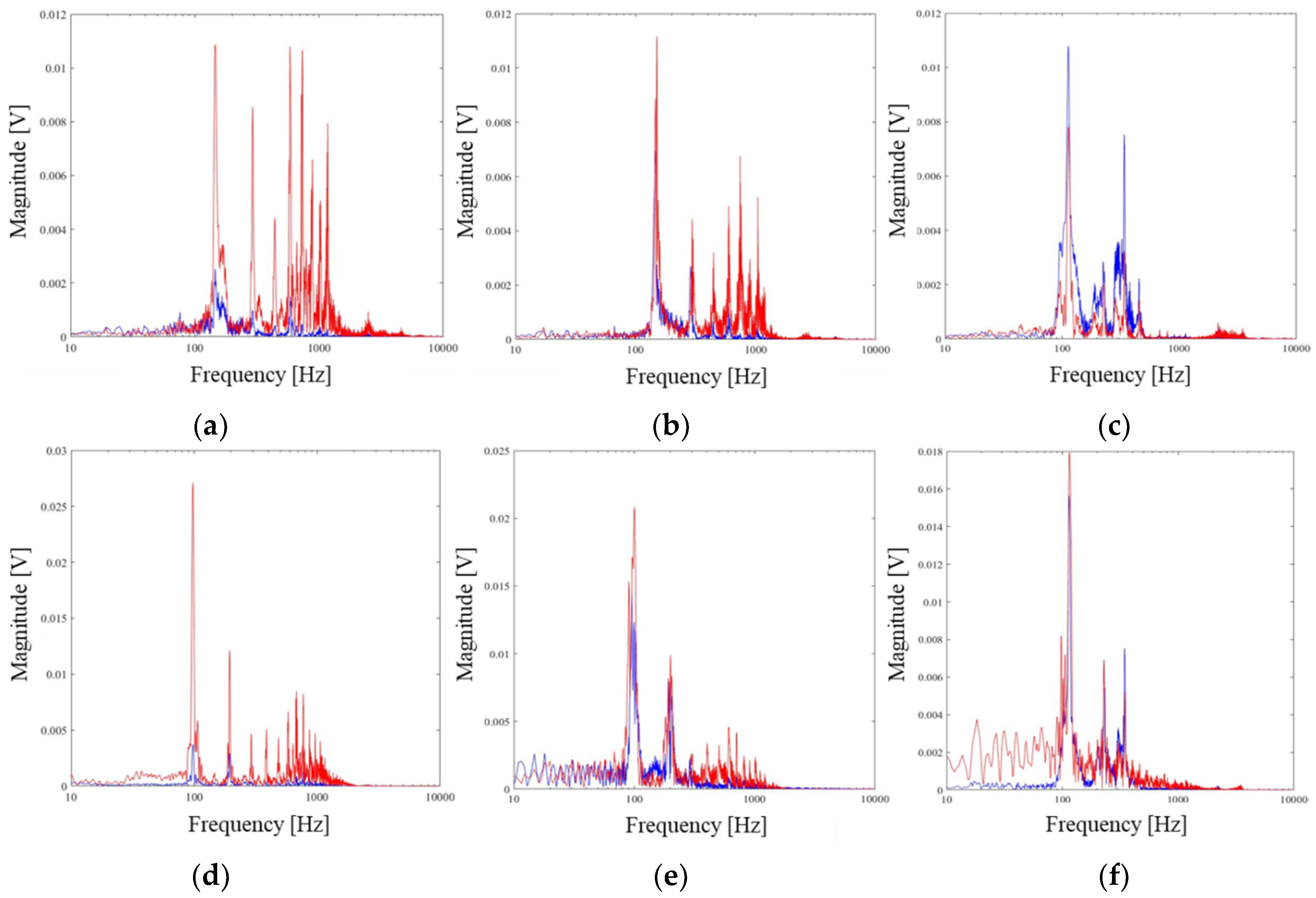
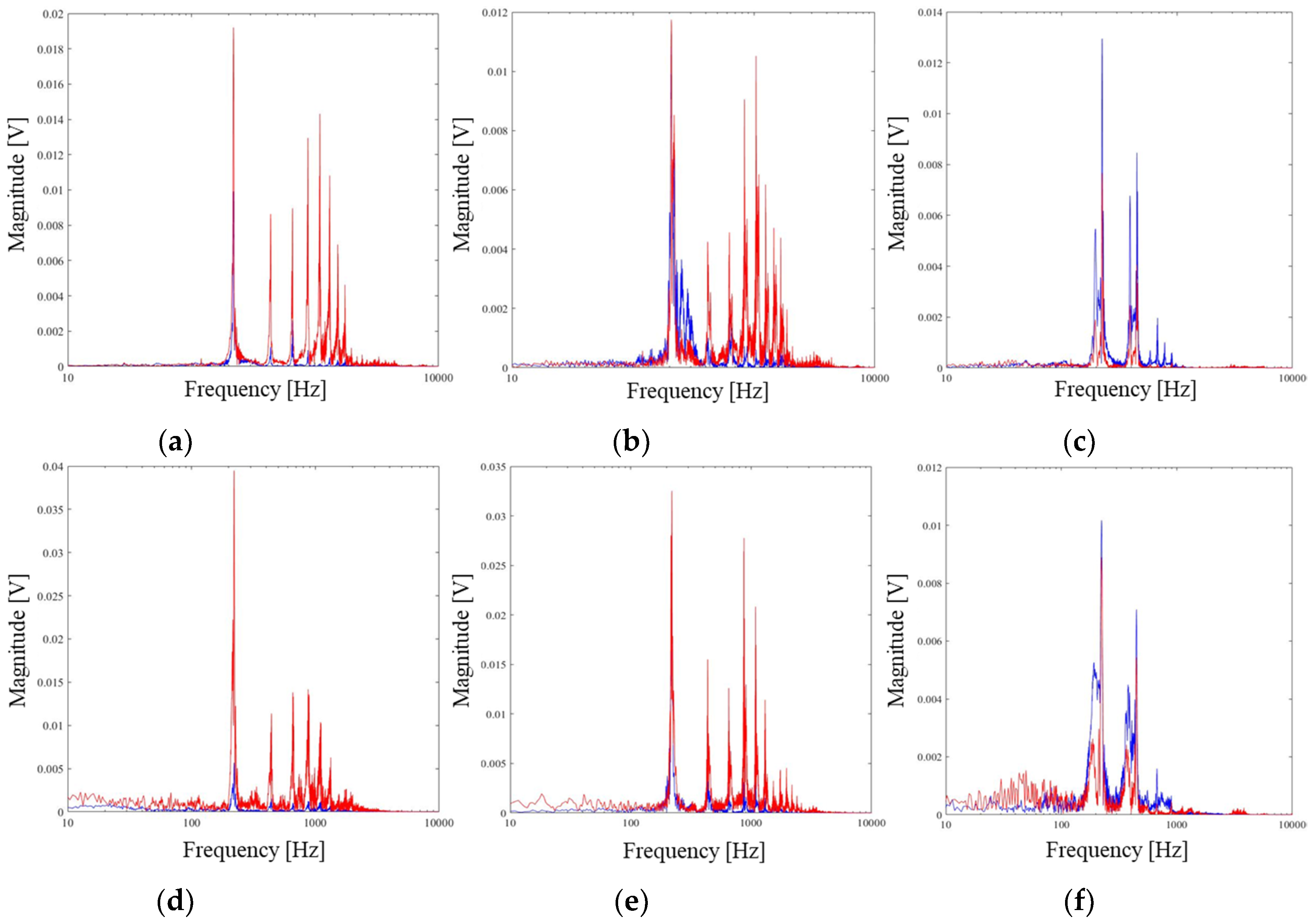
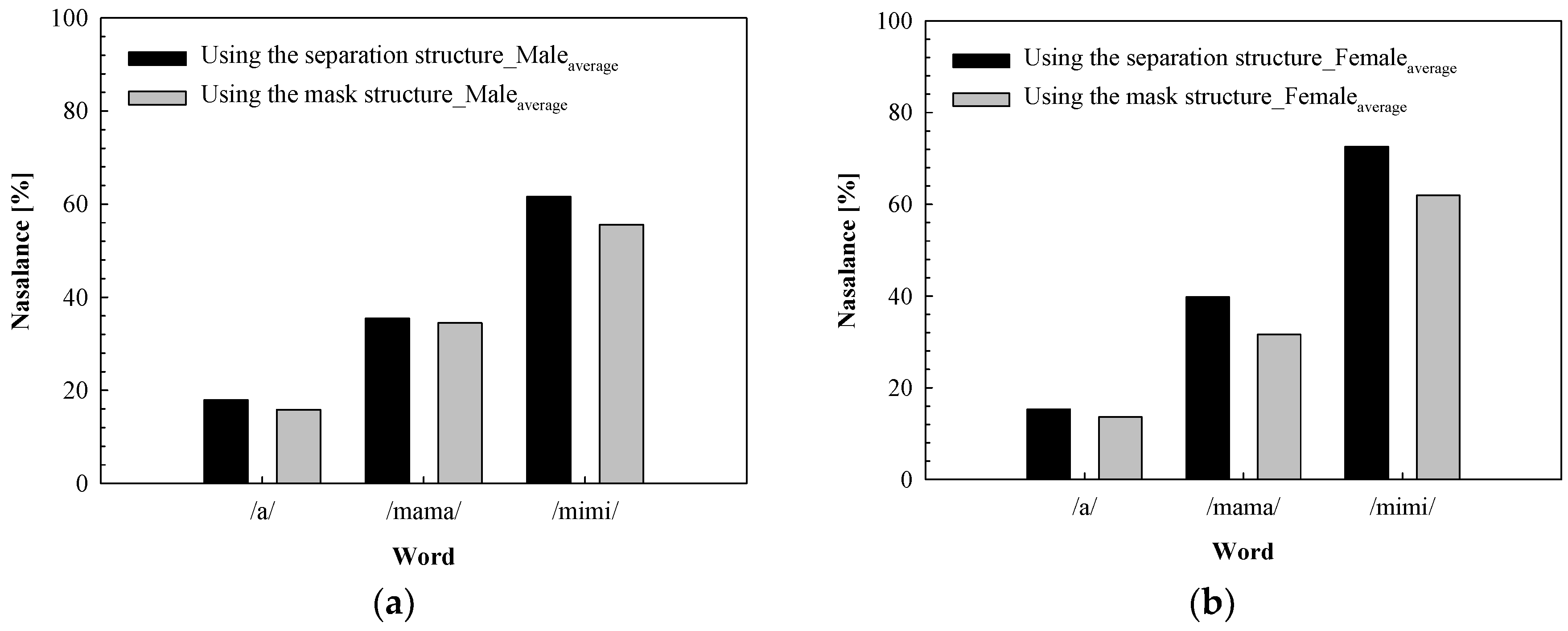
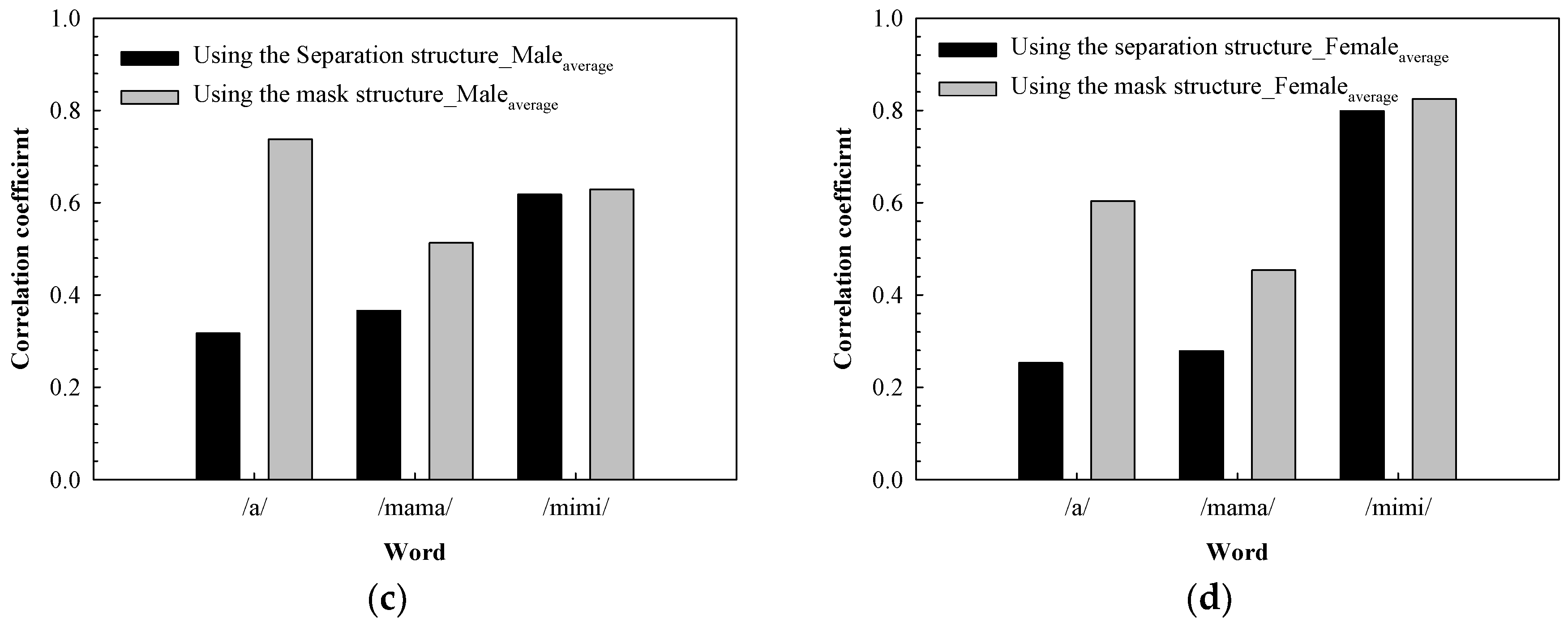
| Electrical | Mechanical |
|---|---|
| Voltage, E [V] | Force, F [N] |
| Current, I [A] | Velocity υ [m/s] |
| Resistance, R [Ω] | Viscous Damping Factor, C [N·s/m] |
| Inductance, L [H] | Mass, M [kg] |
| Reciprocal of Capacitance, C − 1 [F] | Stiffness, K [N/m] |
| Effective Area of Acoustic Hole | Mass of Air, mM (Electrical, L) | Stiffness of Air, 1/sM (Electrical, C−1) | Resistance of Air, rM (Electrical, R) | Calculation Frequency |
|---|---|---|---|---|
| 0.28 cm2 | 0.0672 µg | 13.5520 N/m | 0.0002 Ns/m | 166 Hz |
| (0.0672 µH) | (13.5520 F) | (0.0002 Ω) | ||
| 3.14 cm2 | 0.4824 µg | 0.2629 N/m | 0.0110 Ns/m | 447 Hz |
| (0.4824 µH) | (0.2629 F) | (0.0110 Ω) | ||
| 4.52 cm2 | 0.7536 µg | 0.1077 N/m | 0.0270 Ns/m | 558 Hz |
| (0.7536 µH) | (0.1077 F) | (0.0270 Ω) | ||
| 6.15 cm2 | 1.4760 µg | 0.0280 N/m | 0.1037 Ns/m | 782 Hz |
| (1.4760 µH) | (0.0280 F) | (0.1037 Ω) | ||
| 12.56 cm2 | 3.0144 µg | 0.0067 N/m | 0.4328 Ns/m | 1117 Hz |
| (3.0144 µH) | (0.0067 F) | (0.4328 Ω) |
| Healthy Control Group | /a/ | /mama/ | /mimi/ | ||||
|---|---|---|---|---|---|---|---|
| Nasalance [%] | Corr. | Nasalance [%] | Corr. | Nasalance [%] | Corr. | ||
| Using the separation structure | Male1 | 19.73 | 0.4299 | 40.40 | 0.3530 | 66.45 | 0.7659 |
| Male2 | 17.81 | 0.2532 | 31.47 | 0.3825 | 56.15 | 0.6702 | |
| Male3 | 16.38 | 0.2687 | 34.62 | 0.3634 | 62.24 | 0.6292 | |
| Female1 | 18.09 | 0.2624 | 43.26 | 0.2272 | 79.94 | 0.7645 | |
| Female2 | 7.74 | 0.1927 | 40.80 | 0.2379 | 68.67 | 0.8664 | |
| Female3 | 20.18 | 0.3024 | 35.27 | 0.3724 | 69.22 | 0.7655 | |
| Using the mask structure | Male1 | 19.78 | 0.7725 | 32.22 | 0.4669 | 51.73 | 0.5594 |
| Male2 | 14.65 | 0.7760 | 40.63 | 0.5030 | 61.83 | 0.7622 | |
| Male3 | 13.08 | 0.6640 | 30.62 | 0.5680 | 53.19 | 0.5639 | |
| Female1 | 17.99 | 0.5990 | 32.19 | 0.4490 | 68.02 | 0.7886 | |
| Female2 | 10.54 | 0.4675 | 32.50 | 0.3755 | 60.57 | 0.8097 | |
| Female3 | 12.42 | 0.7451 | 30.15 | 0.5369 | 57.28 | 0.8772 | |
© 2019 by the authors. Licensee MDPI, Basel, Switzerland. This article is an open access article distributed under the terms and conditions of the Creative Commons Attribution (CC BY) license (http://creativecommons.org/licenses/by/4.0/).
Share and Cite
Woo, S.T.; Park, Y.B.; Oh, D.H.; Ha, J.-W. Influence of the Nasometric Instrument Structure on Nasalance Score. Appl. Sci. 2019, 9, 3040. https://doi.org/10.3390/app9153040
Woo ST, Park YB, Oh DH, Ha J-W. Influence of the Nasometric Instrument Structure on Nasalance Score. Applied Sciences. 2019; 9(15):3040. https://doi.org/10.3390/app9153040
Chicago/Turabian StyleWoo, Seong Tak, Young Bin Park, Da Hee Oh, and Ji-Wan Ha. 2019. "Influence of the Nasometric Instrument Structure on Nasalance Score" Applied Sciences 9, no. 15: 3040. https://doi.org/10.3390/app9153040
APA StyleWoo, S. T., Park, Y. B., Oh, D. H., & Ha, J.-W. (2019). Influence of the Nasometric Instrument Structure on Nasalance Score. Applied Sciences, 9(15), 3040. https://doi.org/10.3390/app9153040




